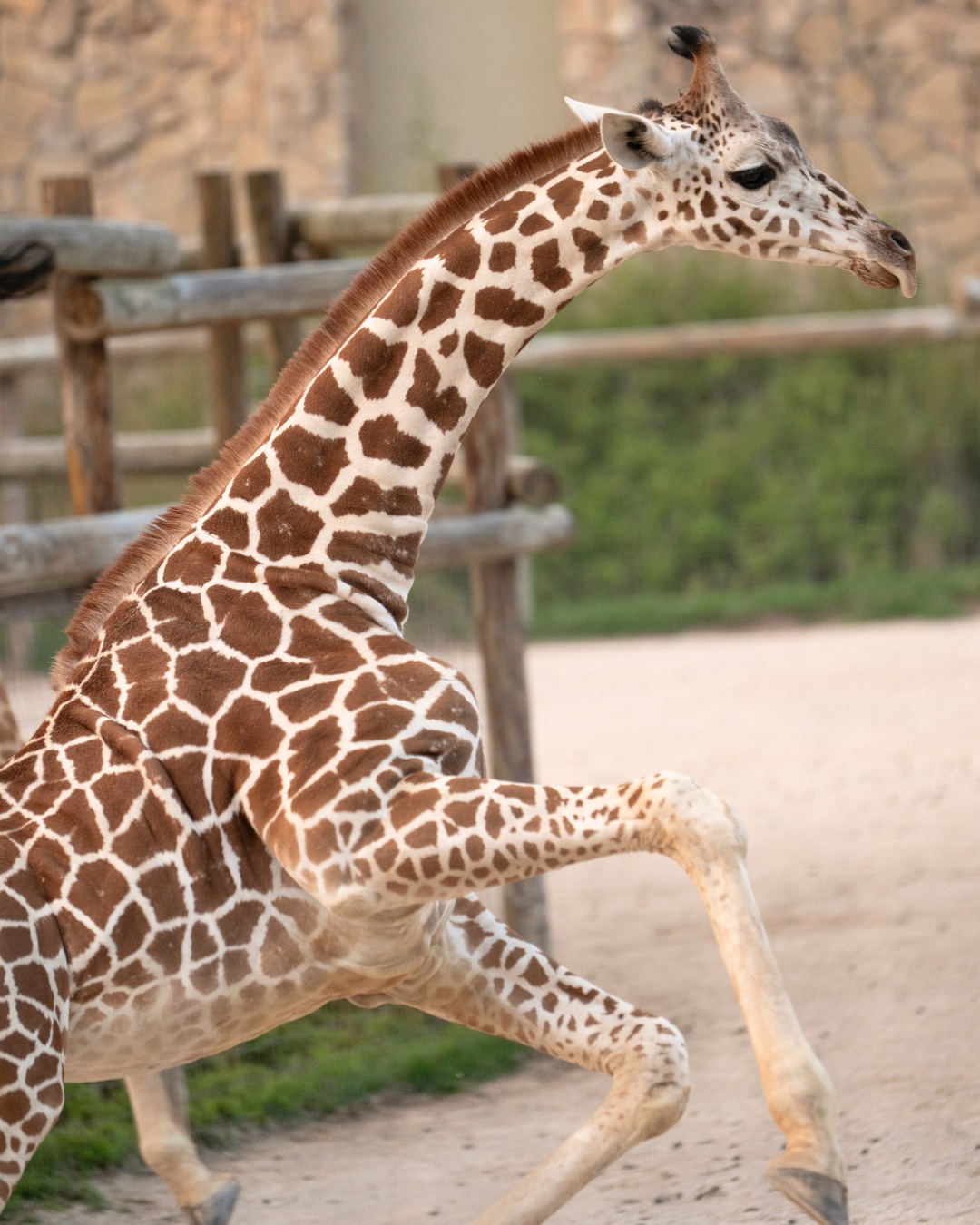- The significance of World Giraffe Day and its connection to giraffe conservation.
- Overview of the events at the World Giraffe Day Festival on June 21st.
- The importance of community involvement and education in wildlife conservation.
- Insights into giraffe biology, behavior, and habitat.
- The ongoing challenges facing giraffe populations and efforts to combat them.
World Giraffe Day, celebrated on June 21, serves not just as a monumental acknowledgment of the tallest land mammals, but also highlights the urgent need for giraffe conservation. Each year, zoos and wildlife organizations across the globe come together to raise awareness about the various threats these animals face. This day encourages both education and action, uniting individuals and communities to safeguard the future of giraffes. As populations continue to decline due to habitat loss, poaching, and human-wildlife conflict, the significance of such events cannot be overstated.
The World Giraffe Day Festival, hosted at the Abilene Zoo on June 21, offers a rich schedule of activities designed to engage the community and promote awareness about the plight of giraffes. Attendees can start their day with a unique yoga session on Twiga Terrace, designed for individuals of all skill levels. This tranquil setting allows participants to connect with nature while stretching amidst the company of giraffes—a perfect way to foster an appreciation for these majestic creatures.
The festival also features behind-the-scenes barn tours, where visitors can observe giraffe care practices up close. These tours provide insight into the daily routines that keep giraffes healthy and thriving in captivity. Knowledgeable staff will share details about feeding, habitat management, and the ongoing rehabilitation of injured or orphaned giraffes. Such interactions play a crucial role in demystifying wildlife care, making it more accessible for those who might not otherwise engage with animal welfare issues.
Additionally, participants will have the opportunity to paint alongside a giraffe. This unique artistic experience intends to raise funds for giraffe conservation efforts while also fostering a creative expression of support for these animals. Art can transcend barriers, uniting people from different backgrounds in the common goal of conservation. In this way, art and wildlife intersect, encouraging community spirit while simultaneously generating financial resources needed for giraffe conservation initiatives.
Special keeper chats are another highlight of the festival. Through these informative sessions, zoo staff share their wealth of knowledge about giraffe behavior, diet, and social structure. Attendees can learn fascinating facts, such as how precocial giraffe calves stand and run shortly after birth—a vital adaptation that enhances their chances for survival in the wild. Keepers also discuss giraffes’ unique adaptations like their long necks, which allow them to browse leaves high in trees that other herbivores cannot reach. These discussions deepen the understanding of giraffe biology and behavior, emphasizing their specialized environmental role.
As part of the celebration, the festival will host a special event to commemorate Congo’s 10th birthday. Congo, one of the zoo’s resident giraffes, represents not just a beloved animal but also the shared history and emotional connection people have with wildlife. Celebrating an animal’s milestone fosters a sense of community, allowing attendees to feel connected to the giraffes in their care and, by extension, to the greater conservation efforts at play.
Community involvement is fundamental to the success of these initiatives. Engaging local residents through fun and informative events encourages an emotional stake in wildlife conservation. Education fosters awareness, and awareness leads to advocacy. Support from local communities amplifies the message of conservation, allowing individuals to recognize their role in preserving biodiversity.
An understanding of giraffe biology and behavior is crucial for comprehending the numerous challenges these animals face in their natural habitats. Giraffes are herbivores, primarily feeding on acacia leaves, which are high in protein but low in carbohydrates. Their long necks permit them to reach this preferred food source, while also providing a vantage point for spotting predators. Interestingly, research has shown that giraffes engage in social grooming, further illustrating their complex social structures. Adult females and males often form loose herds, indicating an intricate social behavior not commonly known.
However, giraffe populations face significant obstacles. Over the last several decades, the numbers of giraffes in the wild have plummeted. According to the International Union for Conservation of Nature (IUCN), populations have declined by over 30% in the last three decades. Habitat loss due to agricultural expansion, urbanization, and poaching has resulted in fragmented populations that struggle to thrive. Giraffe conservation initiatives aim to combat these threats through multiple strategies, encompassing habitat restoration, anti-poaching patrols, and community awareness programs.
Organizations focused on giraffe conservation strive to foster a deeper understanding of these challenges among various stakeholders. By collaborating with local communities, non-governmental organizations, and government agencies, these initiatives address the root causes of population decline. Education serves as a crucial tool for building empathy and respect for wildlife, emphasizing that threats to giraffes directly impact biodiversity and ecological balance.
Tackling the complex challenges surrounding giraffe conservation demands a multifaceted approach. Public awareness campaigns are vital for drawing attention to the pressing issues impacting giraffe populations. Furthermore, funding for research, rescue, and rehabilitation programs plays an integral role in the conservation of giraffes while simultaneously contributing to local economies through ecotourism.
Giraffe populations are not only an ecological concern; they are also part of the cultural fabric of many regions in Africa. Their presence in folklore, art, and local customs highlights the deep connections humans share with these iconic animals. Celebrating World Giraffe Day allows communities to engage with their cultural heritage through the lens of conservation, inviting broader participation in these efforts.
To capture the attention of a wider audience, social media campaigns have helped raise awareness about giraffe conservation. Informative posts, captivating graphics, and videos showcasing giraffe behavior and habitats encourage individuals to learn and share information within their networks. The online platform is a powerful tool for amplifying the message of World Giraffe Day and garnering support for conservation initiatives.
In addition to digital outreach, partnerships with educational institutions can elevate the discourse surrounding giraffe conservation. School programs and outreach can serve as valuable channels for educating young minds about the importance of biodiversity and wildlife preservation. Engaging curriculum that incorporates giraffe biology, conservation, and habitat ecology can inspire future generations to take action.
As we approach the World Giraffe Day Festival on June 21, the collective goal is clear: to celebrate giraffes while fostering awareness around the issues that threaten their existence. The diverse activities offered during the festival serve to underline the importance of community involvement, education, and collective action in conservation initiatives.
This event not only facilitates a direct connection between the community and these remarkable creatures but also brings together various stakeholders to contribute to a larger conversation about wildlife conservation. Participating in the festival allows visitors to be part of a more extensive effort to promote understanding, respect, and love for giraffes and the ecosystems they inhabit.
World Giraffe Day festival at the Abilene Zoo is more than a celebration; it creates a platform for education and collective action aimed at preserving the natural world. By asserting the importance of giraffes within ecosystems and encouraging community participation, these events lay the groundwork for a future where giraffes can continue to roam the African savannas undisturbed. Each ticket purchased and each painting created reflects not just a moment of enjoyment, but a concerted effort to protect a species integral to our planet’s health.
Through committed actions and a shared sense of responsibility, the ongoing efforts to ensure the survival of giraffes can yield meaningful results. As we gather to celebrate these towering icons on June 21, let’s remember that the tallest animals also require our unwavering commitment to their conservation.
*****
Source Description
Get ready to celebrate the world’s tallest animal on the longest day of the year at World Giraffe Day Festival on Saturday, June 21st! 🦒✨
Start your morning with yoga on Twiga Terrace, go behind the scenes on a giraffe barn tour, paint alongside a giraffe to support conservation, enjoy special keeper chats, and don’t miss Congo’s 10th birthday celebration at the terrace! 🎉
Every ticketed experience will support giraffe conservation.
Tickets and event info at https://abilenezoo.org/events/world-giraffe-day/


